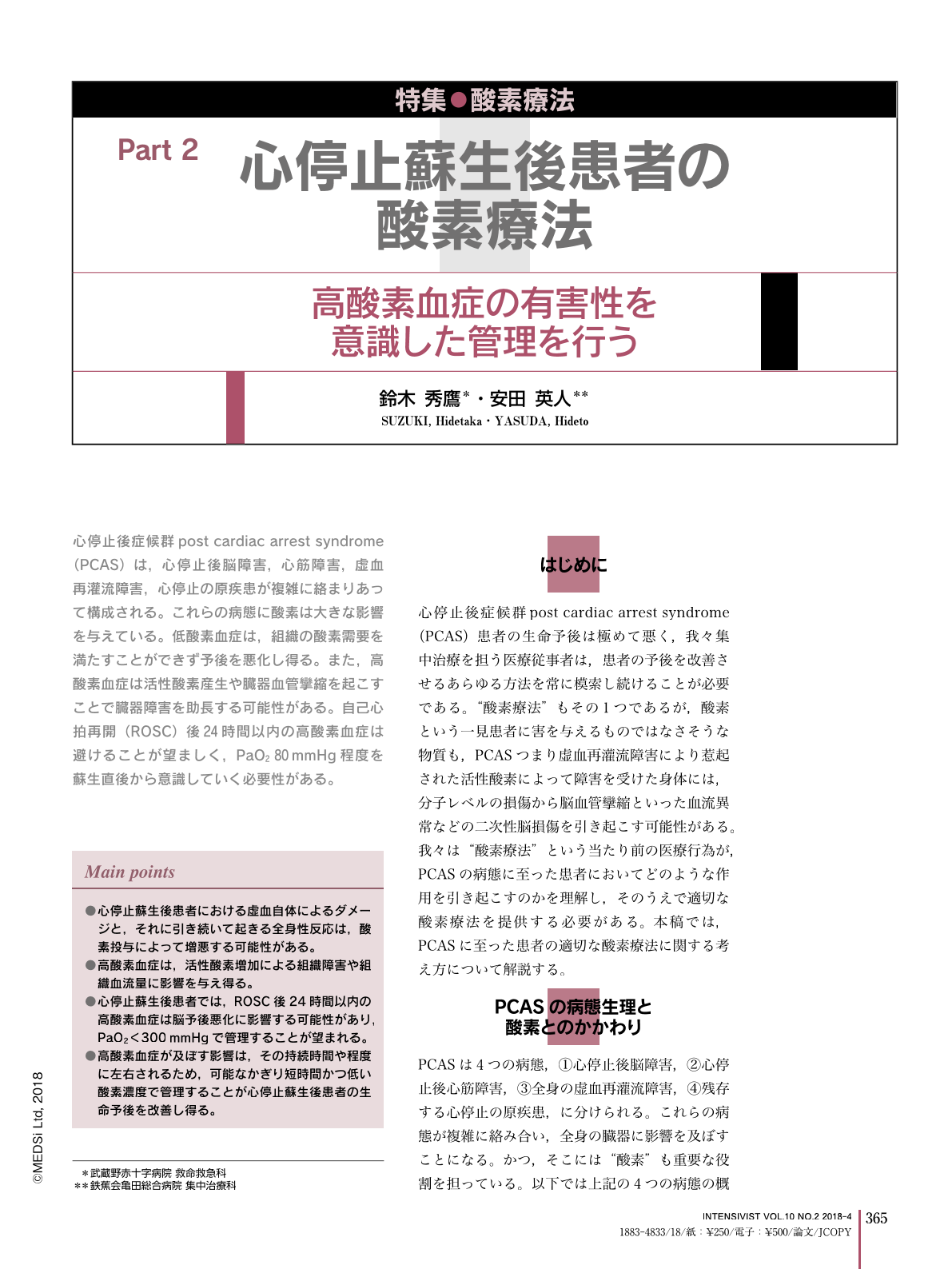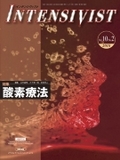Japanese
English
- 有料閲覧
- Abstract 文献概要
- 1ページ目 Look Inside
- 参考文献 Reference
心停止後症候群post cardiac arrest syndrome(PCAS)は,心停止後脳障害,心筋障害,虚血再灌流障害,心停止の原疾患が複雑に絡まりあって構成される。これらの病態に酸素は大きな影響を与えている。低酸素血症は,組織の酸素需要を満たすことができず予後を悪化し得る。また,高酸素血症は活性酸素産生や臓器血管攣縮を起こすことで臓器障害を助長する可能性がある。自己心拍再開(ROSC)後24時間以内の高酸素血症は避けることが望ましく,PaO2 80mmHg程度を蘇生直後から意識していく必要性がある。
Main points
●心停止蘇生後患者における虚血自体によるダメージと,それに引き続いて起きる全身性反応は,酸素投与によって増悪する可能性がある。
●高酸素血症は,活性酸素増加による組織障害や組織血流量に影響を与え得る。
●心停止蘇生後患者では,ROSC後24時間以内の高酸素血症は脳予後悪化に影響する可能性があり,PaO2<300mmHgで管理することが望まれる。
●高酸素血症が及ぼす影響は,その持続時間や程度に左右されるため,可能なかぎり短時間かつ低い酸素濃度で管理することが心停止蘇生後患者の生命予後を改善し得る。
Post cardiac arrest syndrome (PCAS) is the result of a complex which includes ischemic brain injury, myocardial injury, ischemia-reperfusion injury and the etiology of the cardiac arrest. Oxygen may play a major role in the progression of PCAS. Hypoxemia may produce an imbalance in oxygen supply-demand, which may lead to worse clinical outcomes. Nevertheless, hyperoxemia may cause organ dysfunction by producing oxygen free radicals and vasospasm in organ vasculature. For 24 hours following the return of spontaneous circulation, avoiding hyperoxemia, maintaining PaO2 at approximately 80mmHg may be initiated immediately after resuscitation.

Copyright © 2018, MEDICAL SCIENCES INTERNATIONAL, LTD. All rights reserved.


